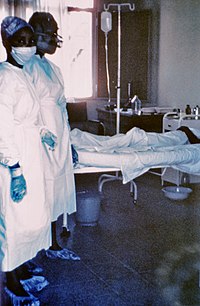
Photo from wikipedia
Kawasaki disease (KD) is an acute self‐limiting vasculitis with coronary complications, usually occurring in children. The incidence of KD in children is increasing year by year, mainly in East Asian… Click to show full abstract
Kawasaki disease (KD) is an acute self‐limiting vasculitis with coronary complications, usually occurring in children. The incidence of KD in children is increasing year by year, mainly in East Asian countries, but relatively stably in Europe and America. Although studies on KD have been reported, the pathogenesis of KD is unknown. With the development of high‐throughput sequencing technology, growing number of regulatory noncoding RNAs (ncRNAs) including microRNA (miRNA), long noncoding RNA (lncRNA), and circular RNA (circRNA) have been identified to involved in KD. However, the role of ncRNAs in KD has not been comprehensively elucidated. Therefore, it is significative to study the regulatory role of ncRNA in KD, which might help to uncover new and effective therapeutic strategies for KD. In this review, we summarize recent studies on ncRNA in KD from the perspectives of immune disorders, inflammatory disorders, and endothelial dysfunction, and highlight the potential of ncRNAs as therapeutic targets for KD.
Journal Title: BioEssays
Year Published: 2022
Link to full text (if available)
Share on Social Media: Sign Up to like & get
recommendations!